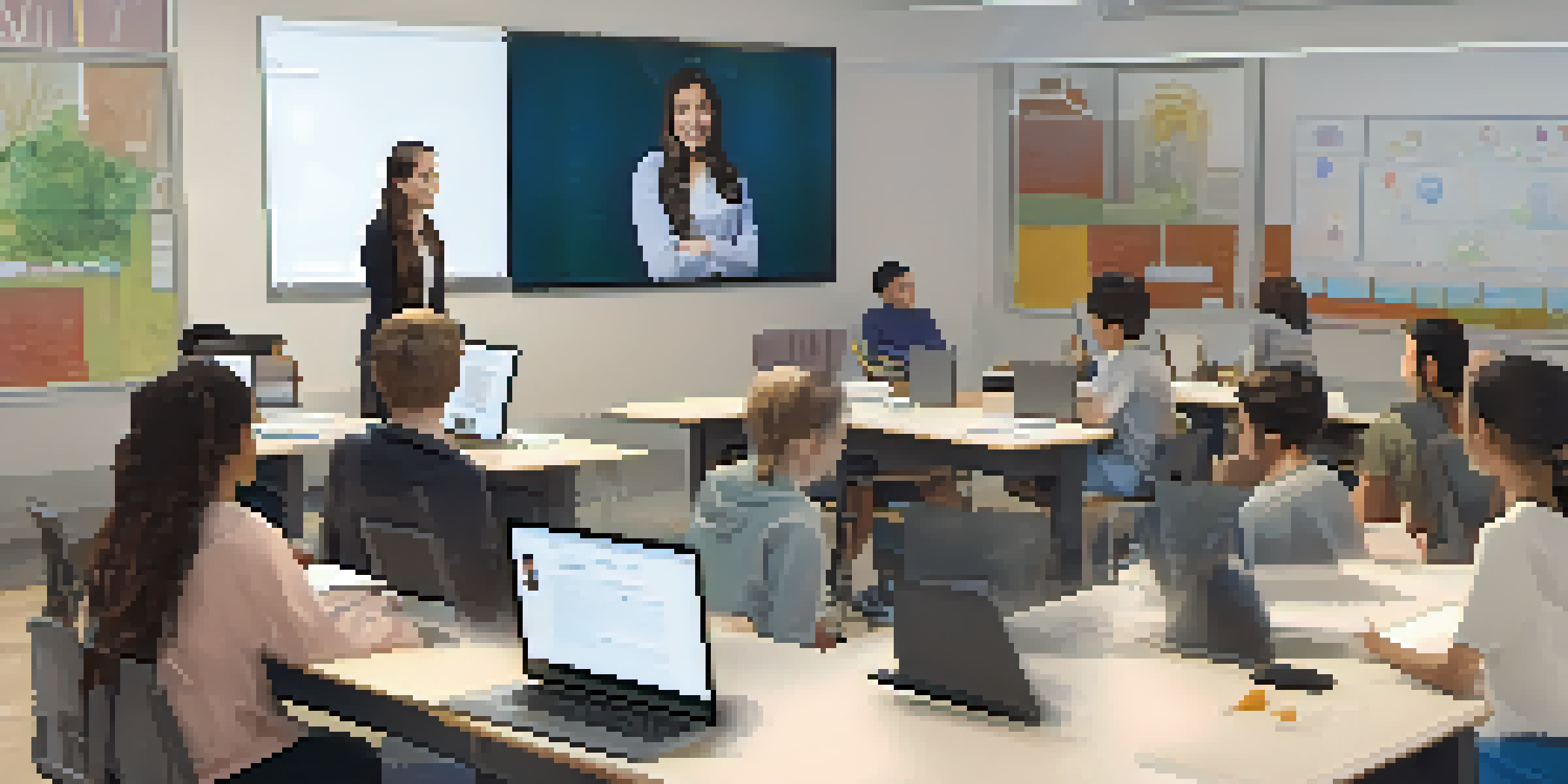Synchronous Learning: The Need for Instructor Presence

What is Synchronous Learning and Why It Matters
Synchronous learning refers to real-time online education where instructors and students interact simultaneously. This format mimics the traditional classroom setting, allowing for immediate feedback and engagement. It's essential in today's digital age, as it combines the flexibility of online learning with the structure of in-person classes.
The Importance of Instructor Presence in Learning
Instructor presence is a crucial element in synchronous learning, significantly impacting student engagement and motivation. When instructors actively participate and facilitate discussions, it fosters a sense of community among learners. This personal touch can make students feel supported and more connected to the course material.
Real-Time Interaction Enhances Learning
Synchronous learning allows for immediate feedback and engagement, similar to a traditional classroom.
Building Relationships in a Virtual Classroom
Creating relationships in a virtual environment can be challenging, but it’s vital for effective learning. Instructors who engage with students through discussions, feedback, and personal anecdotes help bridge the gap between digital and human interaction. These connections not only enhance the learning experience but also encourage students to express their thoughts freely.
Effective Communication Strategies for Instructors
Clear and consistent communication is key to successful synchronous learning. Instructors should utilize various tools like chat, video, and polls to facilitate dialogue and gauge understanding. By actively listening and responding to student inquiries, instructors can create a supportive environment where learners feel valued.
Instructor Presence Boosts Engagement
Active participation from instructors fosters a sense of community and connection among students.
Engaging Students Through Interactive Learning Activities
Interactive learning activities, such as breakout rooms and group projects, are essential in a synchronous environment. These activities not only encourage collaboration but also enable students to apply what they have learned in real-time. When instructors facilitate these activities, it demonstrates their commitment to student success and fosters a deeper understanding of the material.
The Role of Feedback in Synchronous Learning
Feedback is a powerful tool in any educational setting, especially in synchronous learning. Instructors should provide timely and constructive feedback during sessions to help students improve and stay motivated. This continuous feedback loop enhances learning outcomes and helps students feel more connected to their instructors.
Interactive Activities Foster Collaboration
Engaging students through breakout rooms and group projects enhances collaboration and real-time application of knowledge.
Challenges and Solutions for Instructor Presence
Despite its benefits, maintaining instructor presence in synchronous learning can be challenging. Factors such as technical difficulties or large class sizes may hinder interaction. By implementing strategies like smaller discussion groups or utilizing technology effectively, instructors can overcome these hurdles and maintain a strong presence.
The Future of Synchronous Learning and Instructor Roles
As online education continues to evolve, the role of instructors in synchronous learning will become even more critical. They will need to adapt their teaching methods to incorporate new technologies and foster engagement. Ultimately, the success of synchronous learning hinges on the ability of instructors to connect with their students and create a vibrant learning community.